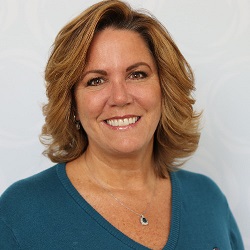Top-Level Takeaways
-
Credit unions put their digital infrastructures to the test as branches closed and business boomed.
-
As cooperatives build out their digital capabilities, those that include the personal touch could emerge stronger than ever.
The coronavirus has forced credit unions across the country to dramatically change how they do business and serve members. At the onset of the pandemic in the United States, branches closed in nearly every state, and credit unions across the country focused on retaining service levels through digital channels.
Now, leaders are reflecting on what they learned during that scramble to respond. What surprised them? Will new insights inform future strategies and tactics? Are there any new must-haves?
Here, credit unions with varying delivery models talk about takeaways and lessons learned from a pandemic that is far from over.
Aspire Federal Credit Union

Tom O Shea, President and CEO, Aspire FCU
Tom O Shea has been president and CEO of Aspire Federal Credit Union($137.1M, Clark, NJ) for the past 15 years. The New Jersey credit union has been essentially branchless since 2014 and closed its member service center in mid-March. That two-desk operation handled new accounts, lending, and special requests and will remain closed unless member needs dictate otherwise, O Shea says. Image: TomO Shea_Aspire Caption: Tom O Shea, President and CEO, Aspire FCU
What has surprised you most about your members online/digital behavior during the pandemic?
Tom O Shea: We deliver services virtually, so there s been little adjustment. The money we don t spend on branches we largely spend on technology and improving the member experience.
How do you plan to build on that information?
TO: We believed our model was the future for the delivery of financial services. This pandemic proved us right. More credit unions are moving this way. My concern is many will reopen branches and deliver services as they did prior to the pandemic while their members adopt to a new future and move on. These credit unions will struggle to support both models and do neither of them well.
Bonus question: What update or enhancement would you like to make and why?
TO: We re constantly looking to evolve our services. I d like to get a more forward-looking PFM-tool for members. I d also like tighter integration of our card processor data now serviced off-site into our core for better member access and utilization in the PFM.
Discovery Federal Credit Union

Tara McQuillen, Chief Experience Officer, Discovery FCU
Tara McQuillen has been with Discovery Federal Credit Union ($159.6M, Wyomissing, PA) for 14 years and was named chief experience officer in the summer of 2019. Her single-branch credit union closed its lobby on March 18 and accommodated members by appointment only in person until it reopened on June 8.
What has surprised you most about your members online/digital behavior during the pandemic?
Tara McQuillen: As we anticipated, adoption of mobile and online banking and mobile deposits spiked in March and April and continue to be higher than pre-COVID.
What surprises me the most is that a large majority of people prefer to open their membership accounts and checking accounts in person rather than online. They are comfortable applying for and closing loans electronically, but when it comes to establishing the relationship with the credit union, their preferred method is in-person.
We have a robust online account opening process that takes less than five minutes, but more than 50% of the individuals that opened new accounts when we closed the branch preferred in-person account opening versus online account opening. We continue to see that trend since reopening our lobby.
How do you plan to build on that information?
TM: Shortly after our lobby reopened, we implemented an online appointment scheduling software program that includes a self-check-in kiosk in our lobby to help meet social distancing guidelines and to allow our members to easily choose the channel in which they want to do business with us.
We re also researching our online account opening systems to discover any friction points that might cause individuals to stop the application process and visit the branch instead of opening an account online.
Will a simpler online application process increase the number of online membership and loan applications? Or, do our members truly want that one-on-one, personal adviser experience when establishing a relationship with the credit union? If so, will a video banking solution serve as a remote channel to deliver that desired personal experience?
Bonus question: What update or enhancement would you like to make and why?
TM: Tablet banking would have been instrumental in helping to alleviate the long lines encountered in our drive-thru during high-traffic times when our lobby was closed. We were researching the benefits of tablet banking to use in our branch as we transition to a member experience adviser-type model, but, pre-COVID, we never imagined they would serve as a beneficial tool for a lobby shutdown.
Pen Air Federal Credit Union

Pam Hatt, Vice President of Marketing, Pen Air FCU
Pam Hatt has been vice president of marketing at Pen Air Federal Credit Union ($1.9B, Pensacola, FL) for the past eight years. The Panhandle institution shut its branch lobbies on March 23 and, relying heavily instead on its ITM service branded Pen Air LIVE still restricts branch activity to in-person by appointment only and curbside service. Image: PamHatt_PenAir Caption: Pam Hatt, Vice President of Marketing, Pen Air FCU
What has surprised you most about your members online/digital behavior during the pandemic?
Pam Hatt: Our members were almost forced to use our digital tools. Several had never used our Pen Air LIVE machines in our drive-thru lanes and now love them.
As a marketer, you spend money advertising and speaking to the convenience and time-saving benefits of digital tools and services, but it s hard to change human behavior. People like routine and familiarity. COVID-19 hit and outperformed any advertising campaign or promotion a marketer could ever do. Necessity is the mother of invention thus the reason for digital services but apparently a virus is the driver of adoption.
How do you plan to build on that information?
PH: Like many, we are taking a hard look at fast-tracking many digital initiatives during this downtime to better serve our members. We were already in the process of onboarding or enhancing several digital tools. The pandemic has allowed us to prioritize those projects and get them up and running.
Bonus question: What update or enhancement would you like to make and why?
PH: I m not sure if this is an update or enhancement, but I would definitely communicate the importance and value in members providing their email address. That s not only because of the coronavirus. We just went through Hurricane Sally, and if all our members had a current email address on file, we could have communicated to them much more effectively.
Pennsylvania State Employees Credit Union

George Rudolph, President and CEO, PSECU
George Rudolph joined Pennsylvania State Employees Credit Union ($7.1B, Harrisburg, PA) as its president and CEO in April 2019. The Keystone State cooperative has two service centers. It close one in March and has kept the other open by appointment only. Image: GeorgeRudolph_PSECU Caption: George Rudolph, President and CEO, PSECU
What has surprised you most about your members online/digital behavior during the pandemic?
George Rudolph: PSECU has long focused on digital-first banking and remote service operations. The COVID-19 pandemic tested the usefulness and readiness of that operating model.
We are pleasantly surprised at both the quick, incremental uptake by our members and how resilient our systems are to this additional volume. At the peak of the stimulus payment deposits earlier this year, we experienced one weekday with a 100% increase in the number of daily digital logins over our previous record all without even so much as a blip on the radar.
How do you plan to build on that information?
GR: The rapid onset of additional digital tool adoption by our members since the start of the COVID-19 pandemic is a clear reminder of the importance of investing in scalable, easy-to-use digital resources for our existing and future members.
This is particularly true since many members who may have tried digital tools for the first time during the pandemic are likely to rely on them more heavily going forward.
Bonus question: What update or enhancement would you like to make and why?
GR: As the pandemic quickly unfolded and we had to figure out how to become even more remote, including with our workforce, it became apparent we had done a great job at building up our digital-first, remote service channels over the years.
With that said, it was also clear in many cases we hadn t focused enough on the underlying back-office processes that support those digital experiences. Although we were able to swiftly develop temporary workarounds to enable touchless and low-contact, back-office supporting processes, we had a bit of a revelation on just how much more we can do in the future to digitalize our behind-the-scenes efforts.
Teachers Federal Credit Union

Brad Calhoun, President and CEO, Teachers FCU
Brad Calhoun was named president and CEO of Teachers Federal Credit Union ($8.1B, Hauppauge, NY) in May 2019. The Long Island-based cooperative closed its 31 branches to the public on March 21, reopening for lobby appointments in select locations first and then in phases until all its locations fully reopened in June.
What has surprised you most about your members online/digital behavior during the pandemic?
Brad Calhoun: As we began to change our in-branch operations, we had to simultaneously redirect members to our website and mobile app to facilitate the majority of their banking transactions. We worked quickly to provide how-to video guides for our members who might be taking advantage of our mobile and online banking capabilities more frequently or, in some cases, for the first time.
What is interesting is the enthusiasm our members still have for reaching out directly to employees in our branches and call center. It s clear the personal connection we ve established with our members extends to the digital space.
How do you plan to build on that information?
BC: In January of this year, we kicked off a website redesign project as part of our overall rebranding initiative. With the many changes this year has brought, it has been great to get real-time member usage data to enhance our digital capabilities as we work toward launching our new website in the fourth quarter.
In the future, as our members might take greater advantage of our services remotely, our team will continue to provide that high level of personalization and service our members are accustomed to both in-person and digitally.
Bonus question: What update or enhancement would you like to make and why?
BC: We have an immediate opportunity to create more symmetry between our digital and in-person member experience with the opening of our 32nd branch this fall in Stony Brook, NY.
With this branch, we placed strong emphasis on an enhanced type of member experience by prioritizing relationship building, technology, financial education, and personal interactions. Our goal is to not only meet a member s immediate financial needs but also provide a space where they can learn how to reach their financial goals today, tomorrow, and into the future.
These interviews have been edited and condensed.